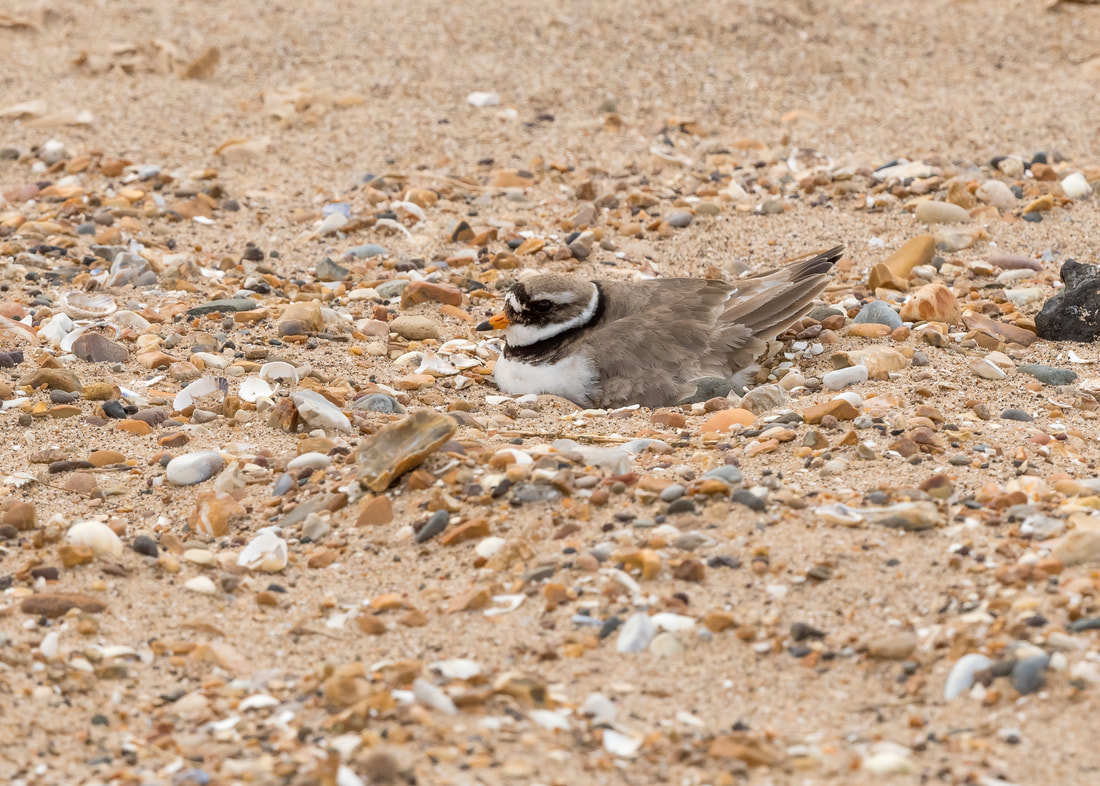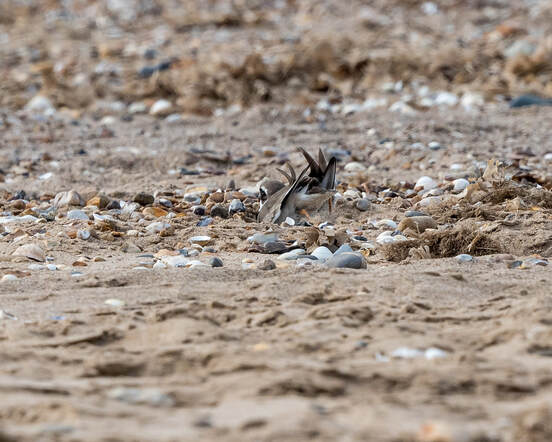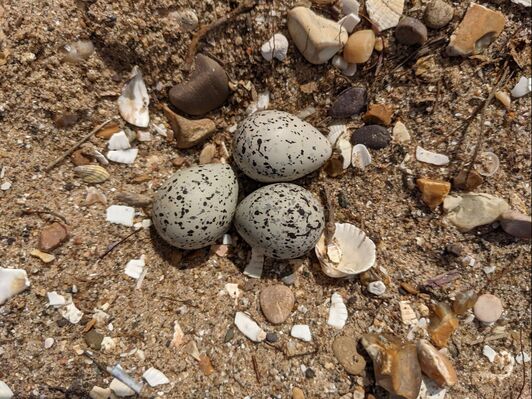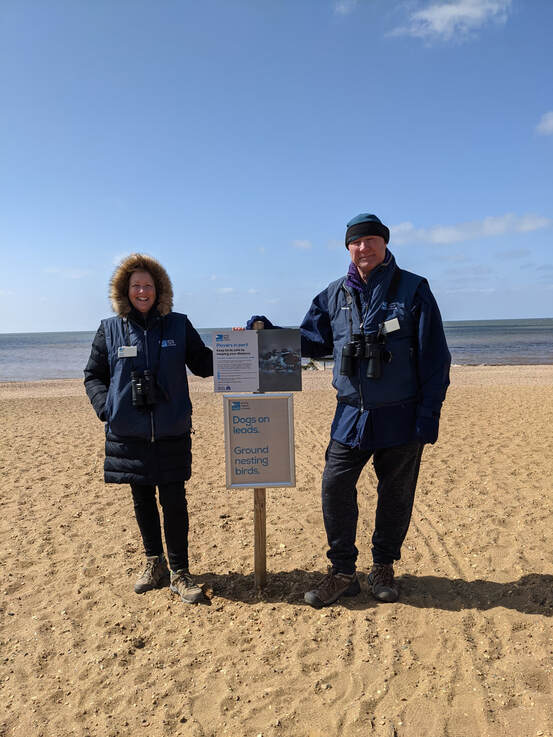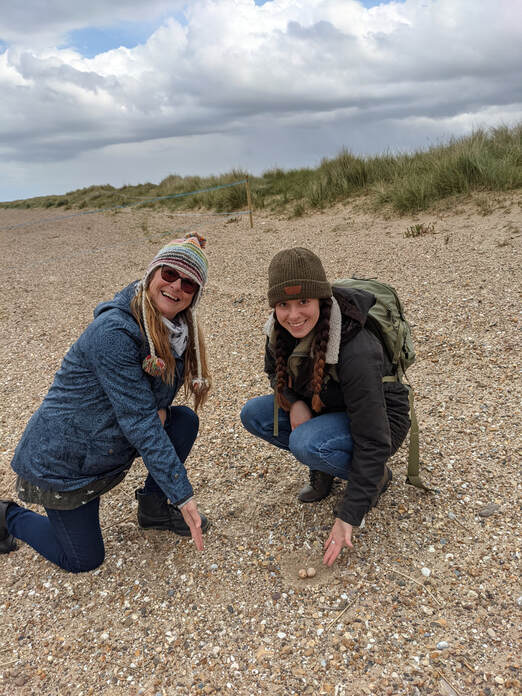|
Guest blog by Wynona Legg, Project Officer Beach nesting birds are facing an extraordinary struggle to raise young successfully on coastal sites around the globe. More and more people are seeing the value of taking time out on the coast with greater visits to more remote sites. This increase in footfall on our beaches is having a severe impact on vulnerable ground nesting birds that are sensitive to disturbance and whose eggs and young are at risk from trampling. So how can we balance our enjoyment of beaches during the summer holiday season with the needs of wildlife relying on these spaces to exist? My name is Wynona and I work with the RSPB as Ringed Plover Project Officer for a newly funded project called ‘Plovers in Peril’. My job is to monitor the population of ringed plovers breeding on a stretch of beach from Snettisham to Hunstanton on the shores of The Wash SSSI. Though at first glance it is a pretty vast stretch of beach, the space left for the birds to breed here is sadly shrinking. By working with Dr Durwyn Liley of Footprint Ecology to compare a study first done in the 1990’s, we hope to compare just how much has changed here within that time and to capture important information on how the birds are faring, how they use the site and the scale of impact visitor pressure is having on their breeding success. Having successfully been granted funding for the project from Kings Lynn and West Norfolk Borough Council through the Habitats Monitoring and Mitigation fund, the RSPB has formed an exciting partnership with Ken Hill Estate and Norfolk AONB and will for the first time, be able to put in place increased protection for the beach nesting birds that rely on this beach to breed. On this busy stretch, we will be erecting physical barriers around vulnerable nests to reduce the risk of trampling. The camouflage of the eggs is so remarkable that they are incredibly difficult to see when we are walking on the upper beach and as a result, they are at constant risk of being damaged underfoot. By creating fence cordons around each nest as they appear, we can ensure the main nesting sites are protected. Clear and engaging signage has been erected at main access points to strengthen that protection by educating beach users about the birds, highlighting the areas they will be using to nest and outlining the best ways for visitors to reduce their individual impact and help give the birds space. Though these physical measures are vital, the most important focus of my work on this site is public engagement. All the work that we are doing here requires the support of both visitors and the local community for it to make a real difference to the birds and it is often a challenge to get the balance right for both wildlife and people. The Norfolk coast is one of the key breeding areas for ringed plovers, holding around 17% of the England total in 2007. Snettisham beach is one of these strongholds. The number of breeding pairs in Norfolk has declined by 79 per cent in 35 years, with just 123 pairs recorded in 2018. It’s not surprising that since lockdown we have seen a rise in people visiting outdoor spaces but many of these sites are rich in wildlife and are incredibly sensitive to disturbance. With our walks often accompanied by our four-legged friends we need to remind ourselves that whilst dogs have come to be part of our families, they have not evolved to be part of these wildlife communities. To beach nesting birds which make their nest on exposed sections of beach, any animal approaching the nest spells danger and adult birds will flush from the nest, leaving the eggs exposed to unforgiving temperatures and predation. The project is about empowering people to be mindful of our impact during the nesting season (April to end of August). We all have a collective duty to visit natural places in a responsible way and every one of us can be the difference in bringing struggling species back from the threat of total loss. Species protection work can be challenging on sites where there is conflict of interest, and face-to-face engagement is one of the most powerful tools we have. The presence of a warden or team of volunteers is so important for us at this site and is such a crucial part of the process of awareness raising amongst both visiting public and local residents. We are engaging with visitors at this site to assess current perspectives and attitudes towards beach nesting birds and the work we are doing to protect them – taking into account the needs and concerns of all. These on-the-ground conversations generate a platform for discussion that gets right to the heart of the problem and will help us shine a light on where we need to focus our efforts to benefit both plovers and people! The results of this project will be published in a British Wildlife magazine in the autumn, along with more detailed technical report available online on the Project LOTE website. The analysis of changes in the status of Snettishams ringed plovers and the BW paper and tech report are funded jointly by LOTE and NE, through the Action for Birds in England programme. Find out more about the project and to follow the projects progress here or contact [email protected] Are you Interested in volunteering for Plovers in Peril as a Beach Ranger this season (1st April-31st August) and live locally to Snettisham or Titchwell? We are looking for help during the breeding season to engage with beach users and protect vulnerable beach nesting birds. Register your interest by emailing [email protected] . We would love to hear from you!
0 Comments
Leave a Reply. |
Archives
April 2024
Categories
All
Photo credits: Oystercatcher by Katie Nethercoat (rspb-images.com)
LOTE Logo credits: Saskia Wischnewski |

